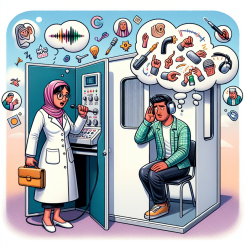Empowering Change: Transforming Challenges into Opportunities for a Healthier Future
In the world of speech-language pathology, practitioners are constantly seeking ways to improve outcomes for children. One of the most effective ways to do this is by leveraging data-driven decisions and evidence-based practices. A recent research article titled "The global challenge of reducing mercury contamination from artisanal and small-scale gold mining (ASGM): evaluating solutions using generic theories of change" offers valuable insights that can be applied to our field, particularly in understanding the broader impacts of environmental health on child development.
The Power of Theories of Change
The research article emphasizes the importance of using a systematic approach, known as a Theory of Change (ToC), to address complex environmental issues like mercury contamination from ASGM. This approach involves methodically articulating assumptions about interventions, connections among actions, and desired outcomes. By doing so, it creates a more effective strategy that encourages coordination and cooperation among stakeholders.
In speech-language pathology, we can draw parallels by using ToC to develop interventions that are tailored to the unique needs of each child. By understanding the causal chain of results and the specific underlying assumptions within the context of the child's environment, we can create targeted interventions that maximize positive outcomes.
Environmental Health and Child Development
Mercury contamination poses a significant threat to human health, particularly affecting the nervous, reproductive, and cognitive systems. Children are especially vulnerable to the neurotoxic effects of mercury, which can lead to cognitive and neurological impairments. As speech-language pathologists, it is crucial to be aware of environmental factors that may impact a child's development and incorporate this understanding into our practice.
The research highlights the importance of engaging with global initiatives like the Minamata Convention on Mercury, supporting national laws and policies, and involving indigenous and local communities in addressing mercury contamination. These strategies can also be applied in our field by advocating for policies that promote healthy environments for children and collaborating with communities to support holistic child development.
Encouraging Further Research
While the research provides a comprehensive framework for addressing mercury contamination, it also underscores the need for further investigation into the effectiveness of various interventions. In speech-language pathology, continued research is essential to refine our understanding of how environmental factors influence child development and to develop innovative approaches to therapy.
Practitioners are encouraged to explore the original research paper to gain a deeper understanding of the methodologies and findings. By doing so, they can contribute to the growing body of knowledge that informs best practices in our field.
To read the original research paper, please follow this link: The global challenge of reducing mercury contamination from artisanal and small-scale gold mining (ASGM): evaluating solutions using generic theories of change.










